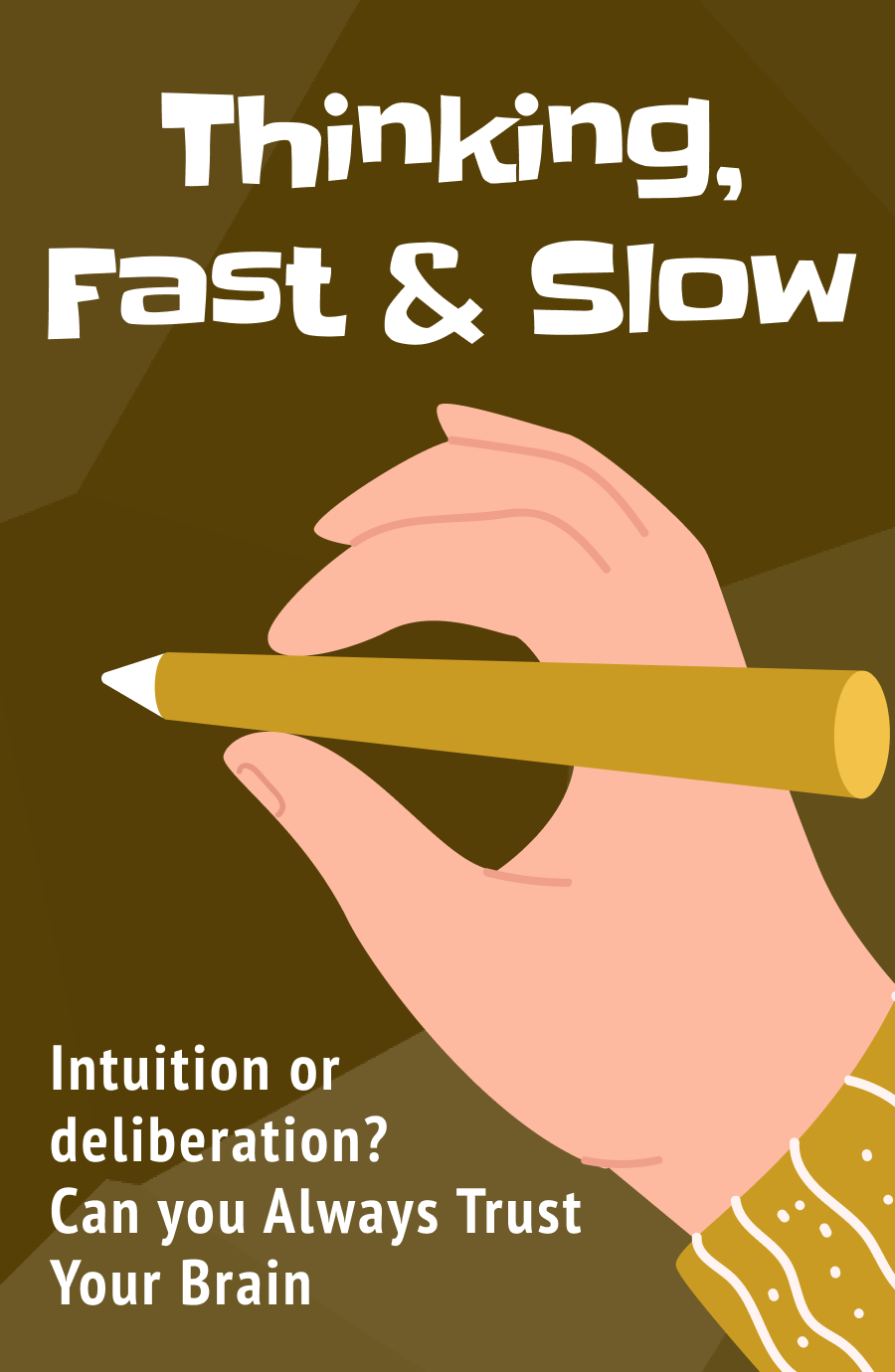Lesson 1: The Division of Thought
Very often, we misunderstand ourselves and the way we think. We will explore how we can be more aware of the mistakes in our self-perception, and learn terms to understand and discuss how we misunderstand, based on recent research and data. While scientists have long since believed that humans are logical thinkers, recent information has found that our perceptions are skewed, and we are too easily convinced by insufficient proof. We tend to use heuristics, also known as mental shortcuts, to answer questions whose answers we don’t know.
The instincts of experts in their fields of expertise arise from repeated recognition of patterns. Hence, their instincts and perception tend to be more accurate than the average person’s. However, even experts are often prone to using heuristics or being biased in their perceptions.
Your brain’s thought process is hence separated into two systems: System 1 and System 2. System 1 is fast thinking, also known as your instinct. It operates involuntarily and fast, and we have limited control over it. System 2, or slow thinking, concerns cognitive activity, that is straining, such as difficult arithmetic or logic. For example, System 1 can automatically identify the expression on someone’s face and interpret their emotions, while System 2 can solve a two-digit multiplication sum by recalling the steps stored in memory. Our perception of ourselves often aligns with our System 2 rather than our System 1, hence System 1 affects more of our thought process than we expect.
Doing challenging arithmetic or logical tasks activates your System 2, which affects your body. Your muscles will flex, your heartbeat will speed up, and your pupils will dilate. These physical indicators are an accurate measure of how activated your System 2 is. When your System 2 is fully engaged, you may become completely unaware of any other events in your surroundings deemed less important by your brain. As your expertise in an activity increases, the attention it requires decreases. The “law of least effort” applies to mental activity, where your brain will use the method which requires the least effort to complete a task. Holding multiple distinct thoughts in your brain at once also takes more energy. System 2 can also assign itself objectives that are not natural or instinctive.
System 2 continuously carries out small tasks, such as walking or reading, with very little effort. However, assigning it a difficult task, such as arithmetic, will cause it to redirect attention away from these small tasks, hence stopping them. For example, walking faster decreases how
Unlock Knowledge with Wizdom App
Explore a world of insights and wisdom at your fingertips with the Wizdom app.
 1 Million+ App Download
1 Million+ App Download  4.9App Store Rating
4.9App Store Rating 5000+Summaries & Podcasts
5000+Summaries & Podcasts









